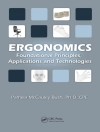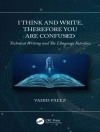Magnesium-Based Nanocomposites: Advances and applications covers the most recent advances in the processing and properties of magnesium-based nanocomposites, which are a class of lightweight sustainable materials with the potential to be revolutionary energy-saving materials and a range of beneficial applications. It provides a complete picture of the materials, including their multi-faceted design and applications in technology, electronics, medicine, and the automotive and aerospace industries.
The book will enable researchers and engineers, irrespective of their discipline, to better exploit the benefits of magnesium-based nanocomposites for multiple applications that can contribute significantly to the safe health of humans and the planet. It also acts as a guide for tailoring materials for targeted applications, and as useful supplementary reading for advanced courses on composites and nanocomposites.
Key Features
- Covers the fundamental science and most recent advances in the processing and properties of magnesium-based nanocomposites across multiple fields of research
- Provides comprehensive coverage of material properties with emphasis on the effects of different types of nano-scale reinforcements
- Includes the multi-faceted design of the materials and their applications in technology, electronics, medicine, and the automotive and aerospace industries
- Acts as a guide for tailoring materials for targeted applications, and as supplementary reading for advanced courses on nanocomposites
Giới thiệu về tác giả
Sankaranarayanan Seetharaman is a research fellow in the Department of Mechanical Engineering at the National University of Singapore. He earned his Ph D from the National University of Singapore and has also been a scientist at the Advanced Remanufacturing Technology Centre, Singapore. He has published more than 50 research articles in peer-reviewed journals and conference proceedings.
Sravya Tekumalla is a presidential postdoctoral fellow and a principal investigator at Nanyang Technological University, Singapore. She is a materials scientist and works to unravel the potential of different novel and advanced metallic materials for aerospace, automobile, biomedical and electronic applications. She holds a Ph D from the National University of Singapore and completed post-doctorate research at NUS. She has published more than 50 scientific articles in international peer-reviewed journals and conferences.
Manoj Gupta is an associate professor and former head of the Materials Division of the Mechanical Engineering Department and director designate of the Materials Science and Engineering Initiative at the National University of Singapore. In August 2017, he was highlighted among the Top 1% Scientists of the World by The Universal Scientific Education and Research Network. He has published more than 590 peer-reviewed journal papers and owns two US patents. He has co‐authored six books, he is the editor‐in‐chief/editor of 12 international peer-reviewed journals and his current citations are greater than 17, 600. His current h-index is 68.












